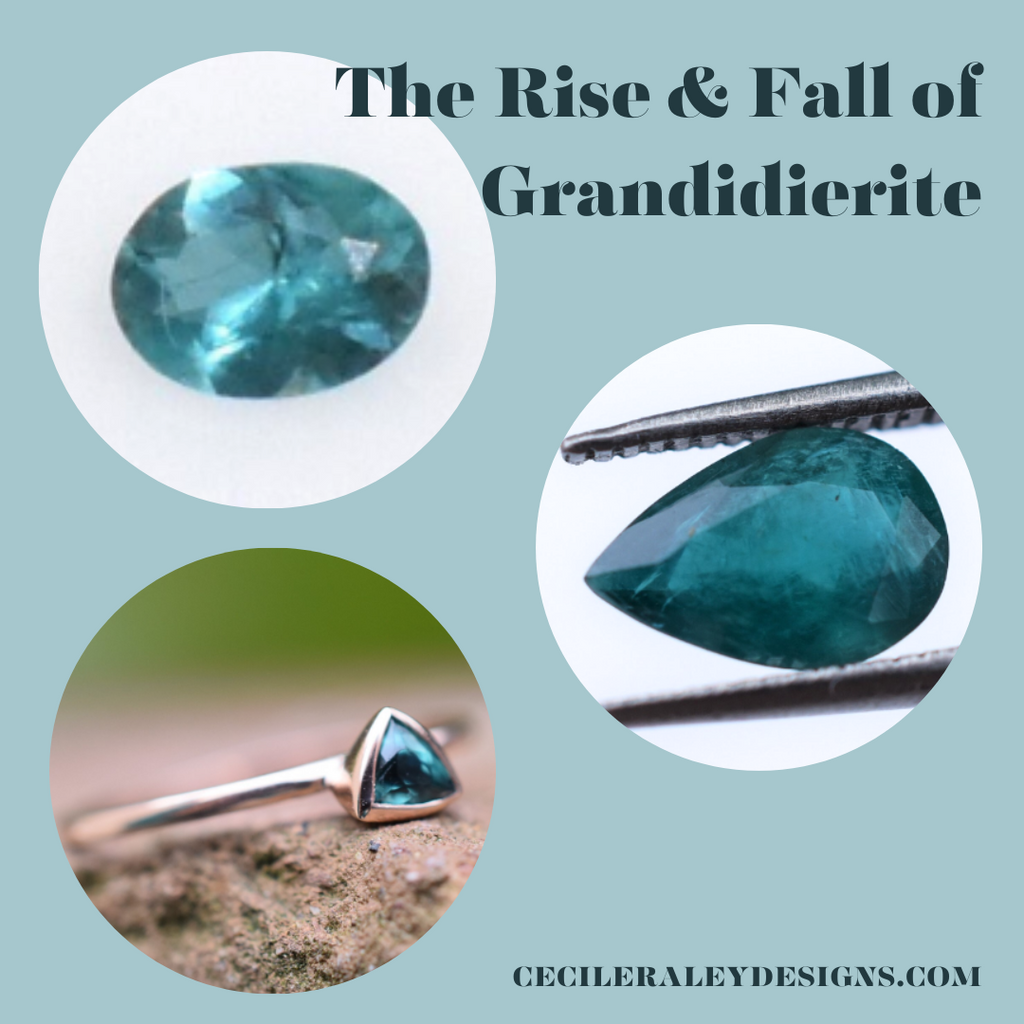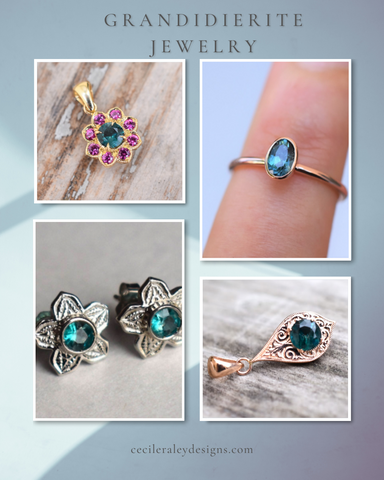The Rise and Fall of Grandidierite

One of the ten rarest minerals on earth! That’s how grandidierite has been advertised in the last decade or so, until… Well, what happened exactly? Why do the most recent online lists of the rarest minerals no longer include this pretty gem, and is the change in attitude towards grandidierite justified?
The first question I ask myself when I read these ‘rarest gem’ lists is how those who establish these lists define the term ‘rare’. Clarity on what counts as ‘rare’ is obviously needed before we can determine if a particular gemstone goes on the list of rare gems. The second question is how it is established that a particular gem then falls under that label. For example, one definition of ‘rare’ is that the gem has only one origin. This is why tanzanite makes so many lists of rare gems. It is found only in Merelani, Tanzania, and nowhere else.
 See in store here
See in store here
But having a single origin is not a great standalone criterion for rarity. Tanzanite is ubiquitous in the gem market and even fine, larger specimens (say 3 carats) are not that expensive or hard to get. A rare mineral should probably also have some sort of limited availability, and if it is pretty, it would also have a correspondingly high price. Benitoite is an example: it is single origin (Benito County, CA), and hard to find in the marketplace. Additionally, pieces over one carat are almost unavailable for sale.
This brings us to grandidierite. Found only in the south of Madagascar, grandidierite is also a single origin stone and it used to be incredibly rare in the gem market. In fact, even now, you can go around the entire GJX or AGTA show in Tucson where all the world’s best materials are displayed, and find very few gems (and almost never above a carat). So why is it no longer on some lists?
I would say before 2015 or so, hardly anyone carried grandidierite, including vendors who bought a lot of goods from Madagascar and then more material was discovered in the Anosy region of Madagascar’s south. Now there are many pits in the region, all of them mining grandidierite.
With some google education, the Malagasy quickly figured out that they had stumbled across a very rare mineral that was traded at a premium, and prices started going through the roof for even included cabbing material. Gemmy rough was still hard to find but initially people paid high prices even for the semi-translucent stuff. I remember some rather overpriced and opaque cabochons being offered to me in Antsirabe in 2016.
 See in store here
See in store here
And as happens so often, when digging really started, a lot more material surfaced. However, over 99.99% if it was merely the totally opaque ornamental quality – meaning you can make tumbled pebbles and low grade beads out of it. You can now find these beads everywhere on the internet. But high-grade faceted material was still almost totally unavailable. At ground level, prices for gem grade rough have gone down significantly but vendors are not able to sell at the prices at which they purchased several years ago, so the material just sits around at the shows, getting no interest at 6K/ct for truly gem grade material in the one carat range. Consequently, vendors are no longer buying grandidierite either, and the market has more or less collapsed. Mining still takes place but the non gemmy material is quite cheap.

When I went back to Madagascar in 2018, I bought some grandidierite for less than in 2016, and in 2022 I received another shipment, also reasonable in price but not top quality either as that material remains extremely rare, even in Madagascar.
One factor that affects price and perception of rarity is how the material is presented online. Unfortunately, with a lot of rare gems, photos of piles of rough material, or small parcels of faceted material, are shown by several vendors, creating a false impression of ubiquity.
That’s exactly what happened with gahnite around 2020. Also called zinc spinel, gahnite is a rare blue form of spinel that is found only in Pakistan. It is very hard to buy in the gem market with larger facet grade gems nearly non-existent. Nevertheless, gahnite does not fetch as much money as it should because buyers falsely believe the material to be abundant and hence over-priced. Meanwhile, as far as I can tell, there was a small find perhaps in 2018 or 2019, and nothing has shown up on the market since then. Notwithstanding, prices remain below what I paid for it back in 2020.
If you are a collector or investor, what should you do if such a situation occurs? If the gem is truly rare in the sense that you are not able to buy what you already own elsewhere (for the same price or a higher one), and if furthermore, the material is pretty (nice color, brilliant), then you should do what we do: put it away and stop worrying about it. Don’t try to put it out on the market, it will be of no use and you will just end up adding to the perceived flood of the material. Sooner or later the market adjusts itself.
That’s how it is in the gem trade. You must have time and patience. I still have gahnite, and grandidierite, but I’m not rushing to dump it out. I cannot replace what I have at the same price, or at all, and that is a simple and hard to argue with criterion of rarity.
Should you invest in grandidierite? Probably not because you need a kind of minimum momentum to be able to resell it at a higher price, and right now that momentum is not here. However, you never know when things will change. Both tsavorite and the mandarin garnet variety of spessartite used to be quite abundant and reasonable. When the market started to get crowded, the smarter vendors took their larger pieces, and even parcels of the more sellable smaller sizes, and put them away for a few years (up to 10 years in some cases). Now this market has stabilized and the harder to sell orange garnet is getting renewed interest. Prices for mandarin garnet are now fairly high and the material sells much better, too.
